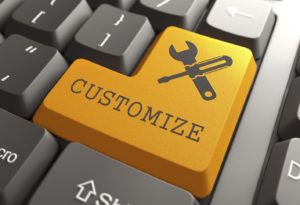There are hundreds of CRM solutions available with a vast array of features for every type of user, industry and situation. Yet half of CRM implementations fail to reach the goals management has for the CRM system.
In most cases, CRM failure comes in the planning and implementation. Too often, executives expect the CRM to jump out of the box and start solving problems.
CRM works when it facilitates business processes and creates new opportunities. That normally can’t happen without significant changes in daily work habits of the sales and customer service teams, which are difficult to change, regardless of what technology you choose.
The first step to a successful sales CRM launch is planning, and the planning should start at the strategic level.
- Why are we doing this?
- What problems will this solve for us?
- What opportunities will it open up?
- What is the economic value of addressing these?
Step 1: Put a dollar figure on success with your CRM.
What will it add to your top and bottom lines this year, next year, etc.? This will help you engage the team in investing the necessary time and resources.
Step 2: Survey the sales staff.
What do they want? What problems do they see? What opportunities are they most excited about? Share your findings with the team. Take a look at this list of great questions to ask in a sales team survey before you implement your online CRM.
Weigh the survey results based on sales results, quota attainment, leadership, length of service, etc. Obviously, you want your strategy to be based on the experience of those that are driving results for the company.
Step 3: Select a team for implementation.
It’s easy to delegate this role to support staff, IT, marketing and other non-customer facing team members. Of course those folks should be involved as well, but recognized leaders and authority figures within the sales team must be involved in the process. There also must be executive sponsorship and involvement in the entire process. This is essential in giving the entire strategy credibility with the team. These will be your champions of the CRM solution! There’s going to be more work to do than you expect so don’t exclude, include.
Step 4: Integrate it!
Consider carefully the need to integrate your CRM with other business systems. The most common example is your ERP or accounting system. Salespeople always want to know what they’ve sold and what specific customers have ordered. Getting that info to them is often inefficient. It’s a huge win in the salesperson’s eyes if now they have instant access to it! It also enables more effective selling and helps to identify sales opportunities.
Step 5: Sell it!
What’s in it for the business? What’s in it for the salesperson? What are the essential new habits that must be formed and followed?
Executive leadership from the CEO down  must be on the same page and repeat these messages as often as possible. There can be no doubt in the minds of the front line troops that this is a strategic initiative and they must be clear on their critical role in its success.
must be on the same page and repeat these messages as often as possible. There can be no doubt in the minds of the front line troops that this is a strategic initiative and they must be clear on their critical role in its success.
Create marketing pieces for the sales team and other essential users that detail out the benefits to the business, its customers, and to the team. Regular updates in sales meetings, etc. of progress and plans and ultimately results are very helpful.
Step 6: Customize the Fields and Screens.

There are essential bits of information about your customers that separate the huge whales from tiny fish and the hot, ready now buyers from cool, next budget cycle tire kickers. That information must be easy to input in a standardized way so that it’s easy to retrieve and search against.
Organize things so it’s all on one screen or organized by role, workflow, and product.
Don’t make users navigate multiple screens to provide the essential information. Let them categorize customers with one hand on their mouse while the other hand is holding the phone. Obviously, users should have a big role in deciding what information should be gathered and how it should be organized. However, management must decide what reports will be essential and fields must be created that will drive those reports.
Remember that if you’re not going to require users to input it every time, then it will be essentially worthless for reporting, segmenting, etc.
Step 7: Create emails and campaigns.
Make it easy for salespeople to send their follow up emails with one click or do it for them with automated email campaigns. Gather examples from the sales team of the emails they’re sending now, and create a set that the entire team can use and the marketing team can maintain and update going forward. This can also include general business processes. When a new customer purchases, automate the process of delegating tasks for various staff and communicating with the customer. A simple example can be a campaign for large customers that reminds the salesperson to call once a month and reminds the customer service team to call once a quarter and sends an email automatically in between.
Step 8: Create dashboards.
Salespeople should get dashboards for every essential or required behavior. Management should have dashboards to manage each salesperson’s performance vs. goals. Here’s an in-depth look into sales CRM dashboards you should consider.
Step 9: Test, Measure, Adjust.
Unless your team is less than roughly 15 users, it’s a mistake to try and roll the solution out to the entire team at once. Pick the group that has the most obvious and easy to implement benefit from the solution and let them road test it for you. Gather feedback,make adjustments,and give it time. Let them adapt to the new system and reach the point where 75% of the initial users are saying they’ve benefited from the system. Measure results and compare them with the original expectations. Are you realizing business value on the order of what you expected? If not, stay focused on a small group and get it right. When you are seeing real world results that impact sales and profits, you’re ready to go big.
Step 10: Training.
Of course, you don’t want to leave it to each user to figure out how to use the system themselves. A generic, vendor driven training session is not likely to succeed either. If you’ve customized an online CRM and built and automated workflows and processes, your team will need to follow unique steps to achieve your goals.
Be sure that the required steps and workflows are in writing,then provide training. Your beta test team or implementation team can often do a better job of training than the vendor. Rollout the system based on teams or business units or role. Don’t try to teach your email marketing person in the same session as your outside sales rep.
Step 11: Measure results.
Your dashboards should tell you what’s happening and who’s adopting the CRM system  the way you want and who is not. Focus on that. In the beginning, this should be just as big a priority as hitting sales goals.
the way you want and who is not. Focus on that. In the beginning, this should be just as big a priority as hitting sales goals.
If you focus on adoption, you’ll get over the hump quicker and be able to focus entirely on selling and growing and serving customers more efficiently. Often just tracking logins by user and by team is very eye opening.
Share the results. It may even be worthwhile to reward users that cross certain thresholds of adoption.
Step 12: Keep adjusting.
Survey users regularly. Keep a skeleton team meeting quarterly to address needed changes in processes or the technology itself. Adjust goals and implement plans. This is journey, not a destination. You’ll find that there are opportunities that arise from CRM use that you didn’t expect.